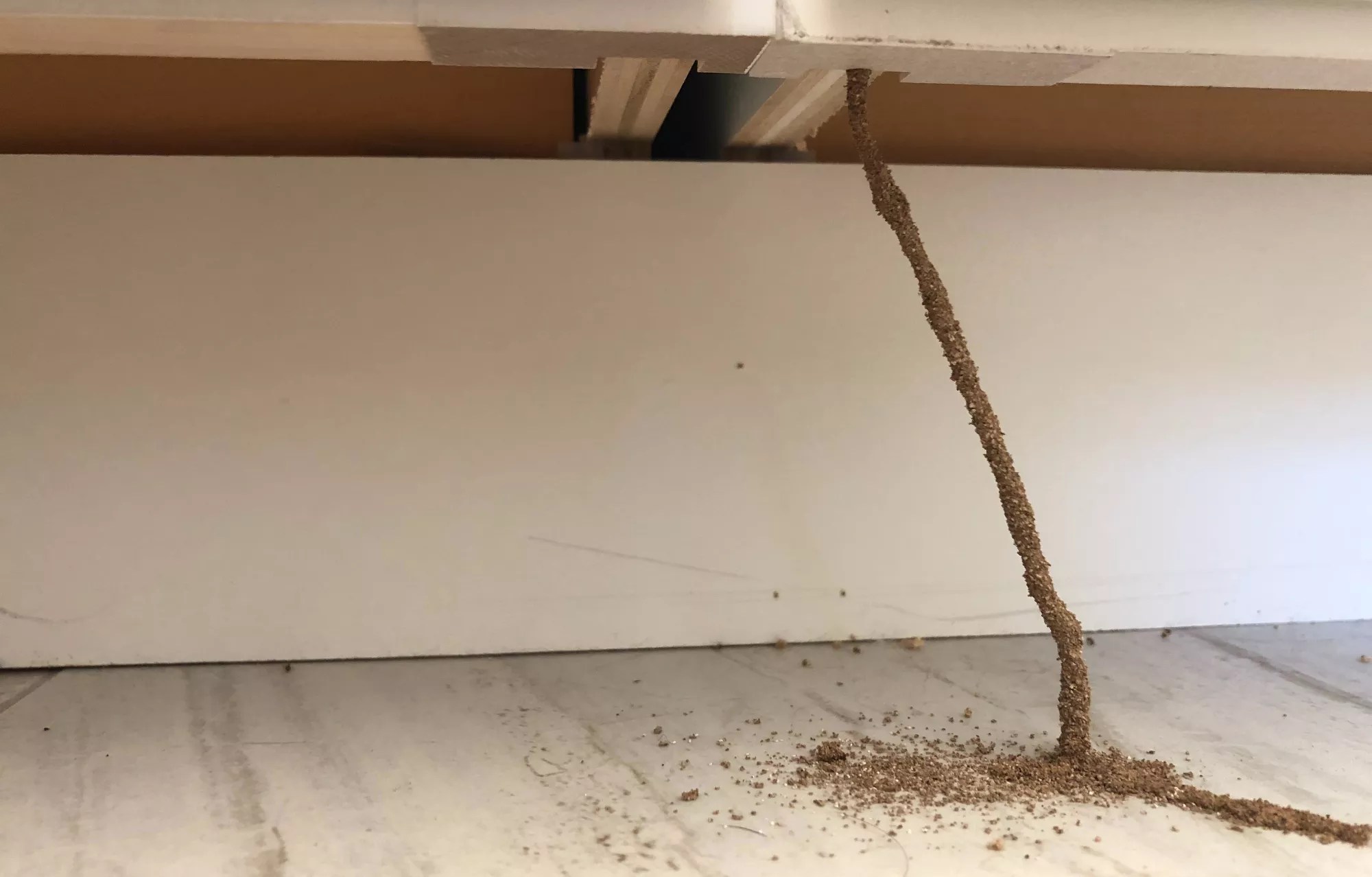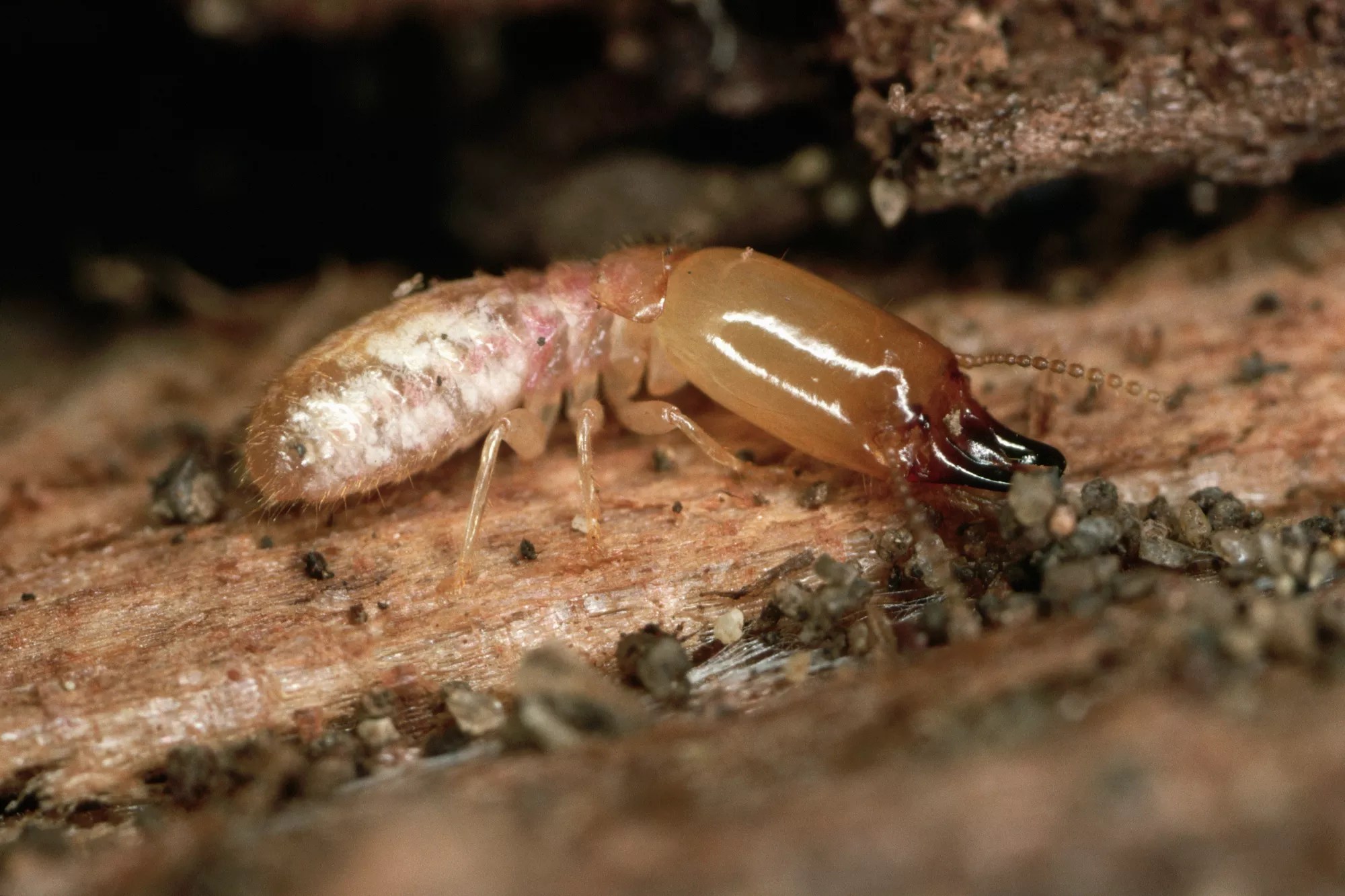
Courtesy of Brad Olsen

Audio By Carbonatix
Scorpions aren’t the only bug that bedevils people in the Valley. Arizona also is filled with termites.
According to Brad Olsen, owner of Urban Desert Pest Control in north Phoenix, there are 20 to 40 termite colonies in every acre of land in the Grand Canyon State. And the folks at Bill’s Pest and Termite note that nearly one in every three houses has or will have a termite infestation.
Why is that so? Well, simply put, Arizona has the perfect climate for termites.
But Valley residents shouldn’t be too alarmed if they find termite tunnels in their homes. Phoenix New Times sat down with Olsen, who has spent a decade battling termites in the Valley, to learn about the persistent wood-gobbling pests.
This year, make your gift count –
Invest in local news that matters.
Our work is funded by readers like you who make voluntary gifts because they value our work and want to see it continue. Make a contribution today to help us reach our $30,000 goal!
Here’s why termites are so common in Arizona, and what you can do about them.
Why are termites common in Arizona?
While termites aren’t a fan of the heat, they really don’t like the winter. To “break a cycle of bugs,” Olsen said, temperatures need to be at 32 degrees or colder for 10 days in a row.
“Mother Nature will not take out termites for you in Arizona,” he added.
About 80% of infestations in the Valley are caused by subterranean termites. Unlike drywood termites that live in wooden structures, subterranean termites always live in the dirt. Still, this species can inflict damage if left untreated; a colony can eat 7 to 10 pounds of wood per year, about the size of a stud – or a single 8-foot-long two-by-four.
“That’s why you just don’t want to give them time,” Olsen said. “If you give termites a lot of time, they’re bad.”
How do you get termites in Arizona?
There are three ways that termites can get into your home, Olsen explained. They can go on the outside of your stem wall, through the cracks in the slab of a home’s foundation or through your plumbing.
Termites are more likely to target older homes and properties with lots of irrigation or “when people flood their yards,” Olsen said. The insects also are more likely to appear during Arizona’s monsoon season, when weather conditions are typically humid and wet.
How can you tell if you have termites in your home?
A number of signs denote a termite infestation, including swarms of the insects inside the home, usually during the spring, and damaged wood. The most common, however, are the presence of mud tubes, or what Olsen calls “mud icicles.” These pencil-size dirt tunnels can be found outside around a home’s foundation or inside along baseboards, near plumbing, under cabinets or around wall outlets. Drop mud tubes often are seen hanging from garage ceilings.
Subterranean termites create mud tunnels to serve as protected pathways between their nests in the dirt outside of the home and their source of food, the wood, according to Alta Pest Control. On the other hand, drywood termites reside in the wood they eat.

Subterranean termites build mud tunnels to shield them as they move between the wood they’re eating and their colonies in the dirt outside.
George D. Lepp/Getty Images
How do you get rid of termites in Arizona?
To protect against termites, properties can receive preventative treatment during the construction phase. This is done by removing tree stumps and roots from within 25 feet of the home’s foundation, ensuring that the property has adequate drainage and pouring concrete within 24 hours of termiticide application, according to a University of Arizona study.
Homeowners who think their houses are infested with termites should schedule a termite inspection by a pest control company. This type of inspection should be done twice a year. And while Olsen said “it’s pretty apparent when you get termites,” and “you don’t have to be Inspector Clouseau to find it,” sometimes what appears to be a termite tunnel is actually a nest built by a mud dauber wasp. That’s why a professional evaluation is important.
If a property does have termites, extermination options are determined by the species. When dealing with the common subterranean termite, Olsen will “trench and treat.” This involves digging a shallow trench around the exterior of the home and pouring various termiticides into the trench, which is then backfilled with dirt. The product leeches into the ground and repels the insects.
Liquid termiticides and baiting systems also are also commonly used. The liquid option consists of “rodding, trenching and sub-slab application of liquid termiticide around the home,” according to the University of Arizona study. Baiting works by “monitoring of a cellulose bait matrix that the termites feed on and die.”
Olsen focuses on three types of termiticides:
- Repellent: This type of product doesn’t hurt or kill the termites. It just makes them want to leave and not live in that dirt.
- Residual: This long-lasting chemical builds a barrier around the structure, killing bugs that come in direct contact with it. However, the queen termite tends to remain safe and still reproduces.
- Transfer: This is the most effective treatment option, as it is transferred to the entire colony by as few as a single termite. Spreading from worker to soldier to reproductive to queen, it “literally knocks the colony out,” Olsen said. Treatments can last for up to 90 days.
In the case of drywood termites, wood replacement or fumigation are the most common treatment forms, according to the University of Arizona.
Olsen notes it usually takes two employees about two to two and a half hours to treat an average-size Phoenix home. However, that varies by home size, severity of infestation and type of treatment.
How much does it cost to get rid of termites in Arizona?
While DIY termite insecticide products can cost as little as $100 or less, professional extermination services, such as those by Olsen’s company, average $750 to $1,000, depending on the size of the property and products used.